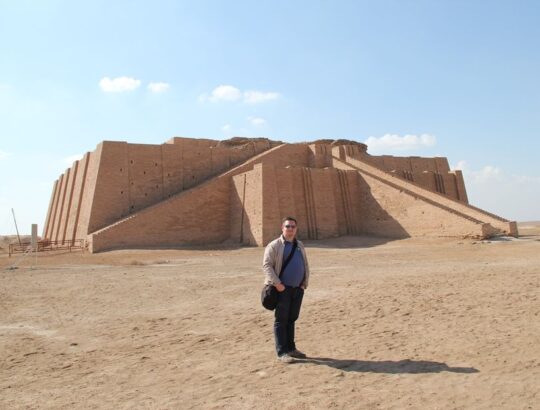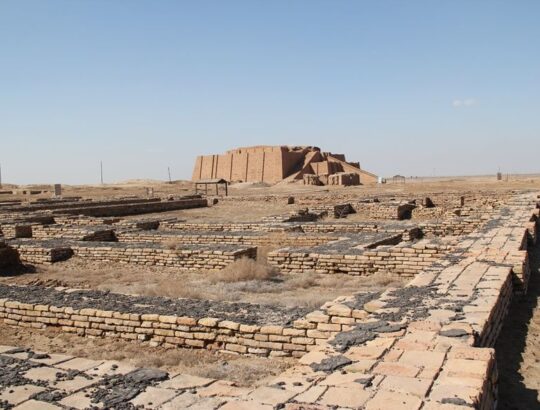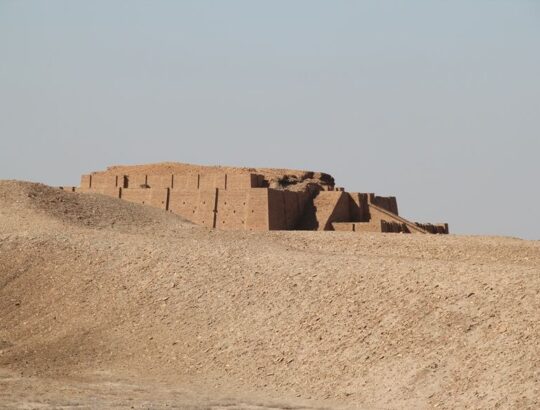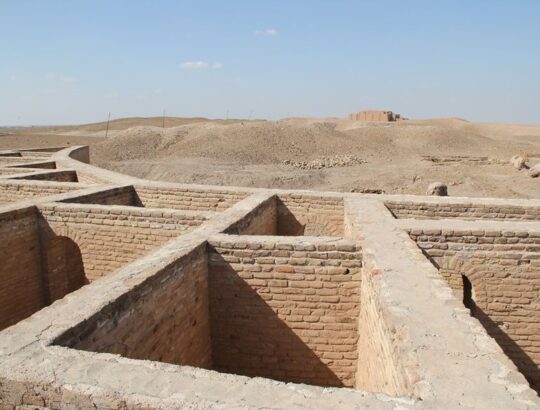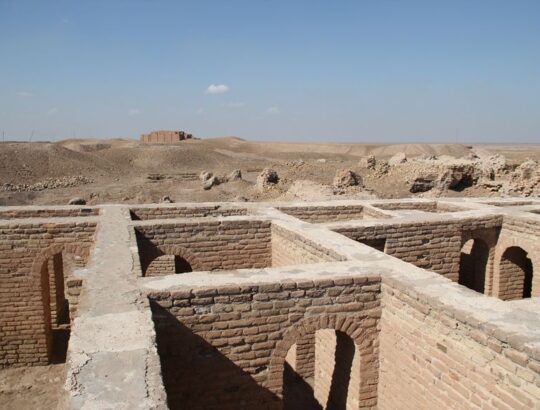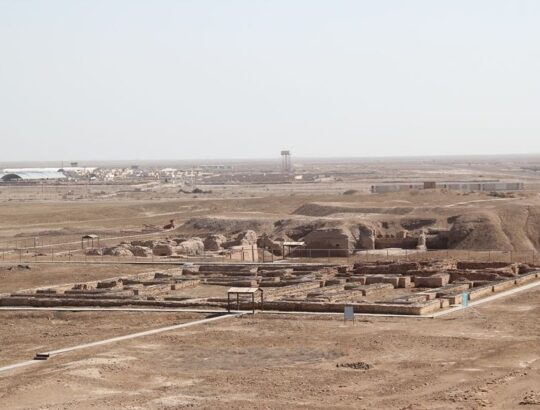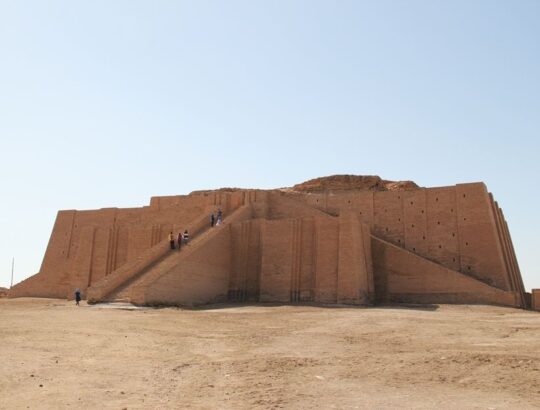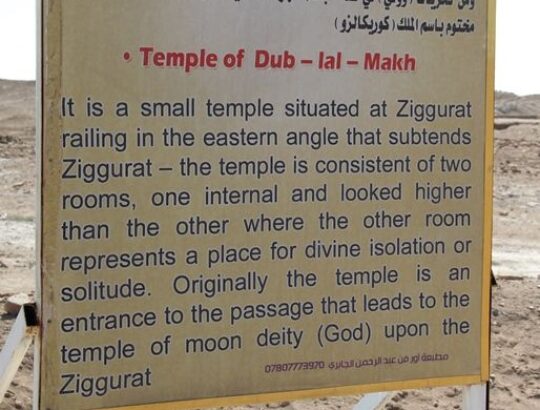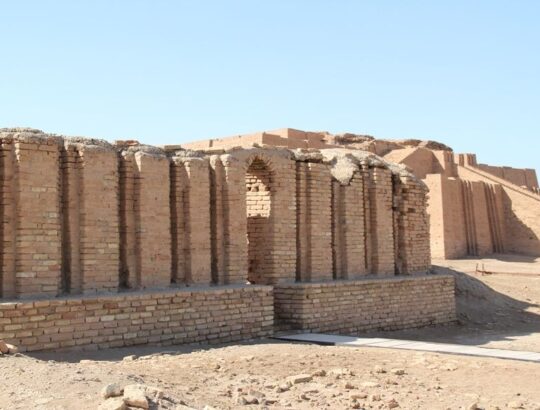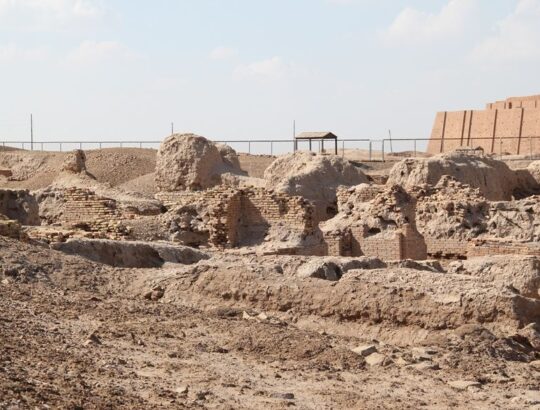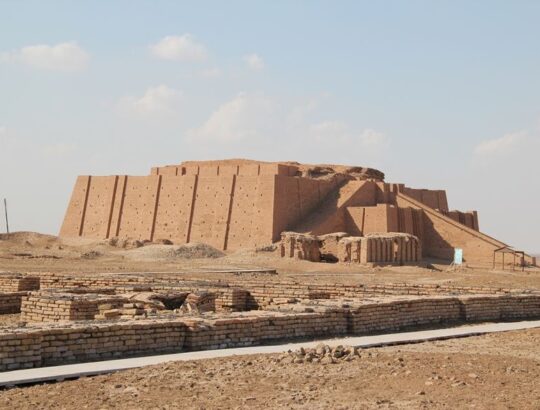Ur
Ur was an important Sumerian city-state in ancient Mesopotamia. The city dates from the Ubaid period circa 3800 BC, and is recorded in written history as a City State from the 26th century BC, its first recorded king being Mesh-Ane-pada. The city's patron deity was Nanna (in Akkadian, Sin), the Sumerian and Akkadian (Assyrian-Babylonian) moon god.
The site is marked by the partially restored ruins of the Ziggurat of Ur, which contained the shrine of Nanna, excavated in the 1930s. The temple was built in the 21st century BC, during the reign of Ur-Nammu and was reconstructed in the 6th century BC by Nabonidus, the Assyrian born last king of Babylon. The ruins cover an area of 1,200 metres northwest to southeast by 800 metres northeast to southwest and rise up to about 20 metres above the present plain level.
Ur is considered to be the city of Ur Kasdim mentioned in the Book of Genesis as the birthplace of the Hebrew and Arab patriarch Abram traditionally believed to be some time in the 2nd millennium BC.
